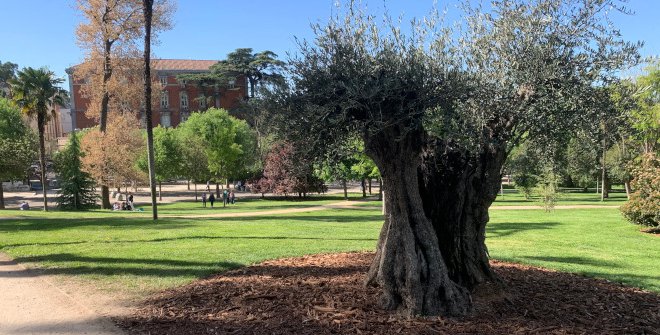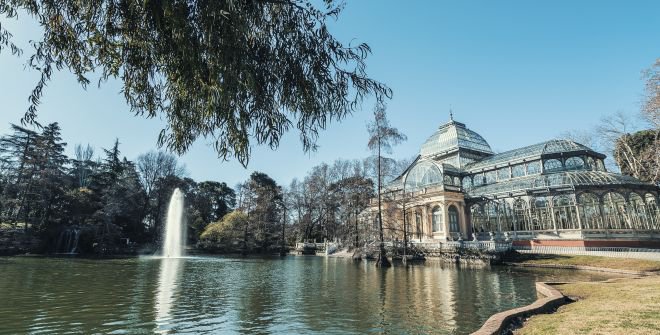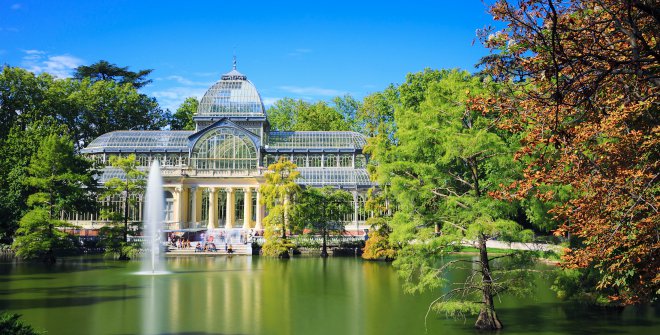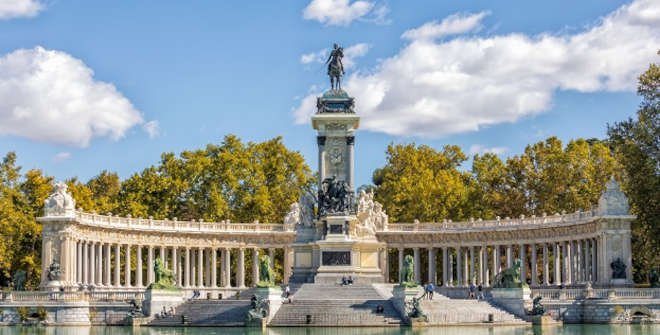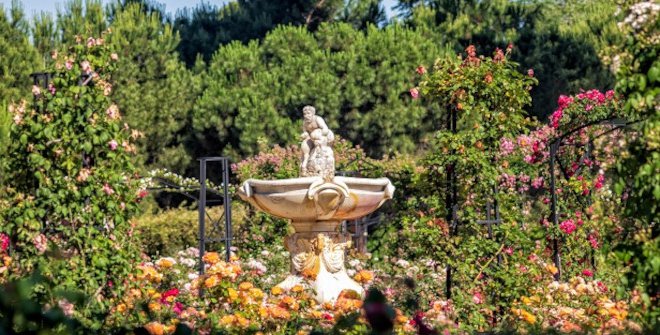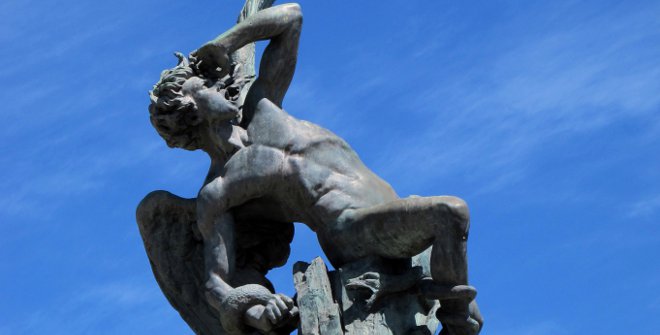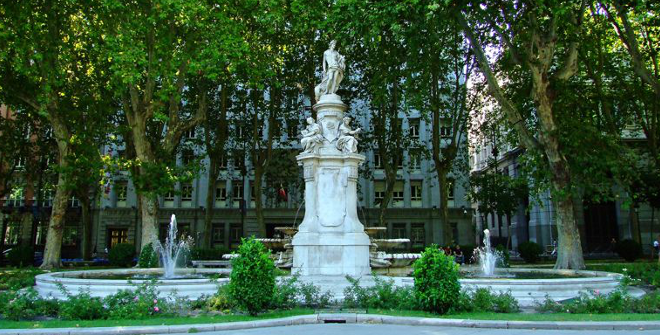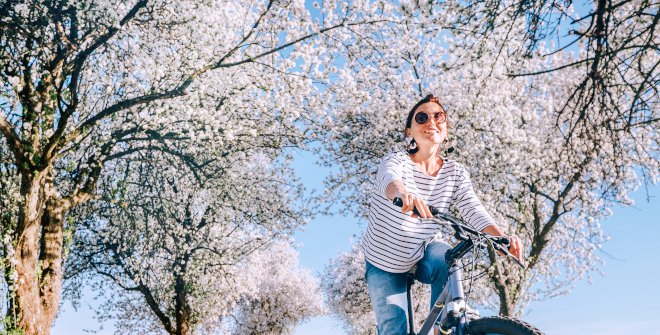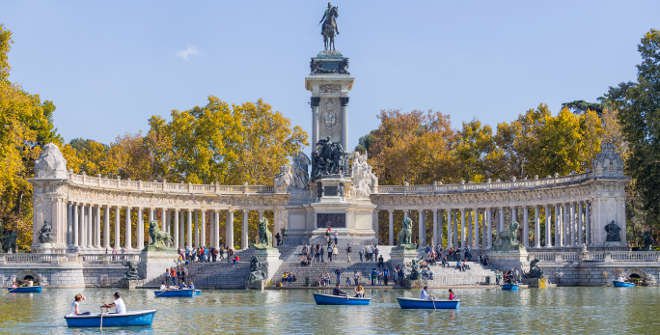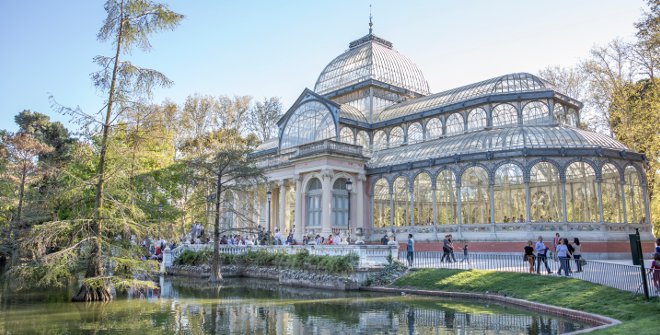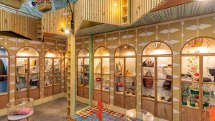A Botanical Route through El Retiro Park
An olive tree over 600 years old is the oldest inhabitant of Madrid’s famous park, a World Heritage Site. This leafy route—ideal at this time of year—is dotted with horse chestnuts, roses, bald cypresses, London plane trees, lilies and countless other species.
Published in esMADRIDmagazine in June 2023
Ramón Gómez de la Serna called it the “garden for those who don’t have a garden”. To this emphatic statement, we would add: “and the favourite place of every Madrileño”. Buen Retiro Park—known to one and all as El Retiro—is a key component of the Landscape of Light, a UNESCO World Heritage Site. The park was designed in the first half of the 17th century around an occasional royal residence built by the Count-Duke of Olivares for Philip IV to use and enjoy. It was during the reign of Charles III, however, that the park opened to the public. Sprawling across 125 hectares, it holds fountains, statues, innumerable plants and some 20,000 trees. The oldest of them all is also the newest. In April, a 627-year-old olive tree dating back to 1396 was replanted in the meadows near the Puerta del Ángel Caído entrance as part of Un árbol por Europa (A Tree for Europe), an initiative that aims to combat deforestation. It weighs five tonnes and stands three metres tall, which is also the size of its diameter. It may not be big, but it’s already the park’s most famous inhabitant. It even has the blessing of a pair of owls that have decided to make it their home. Not a bad choice!
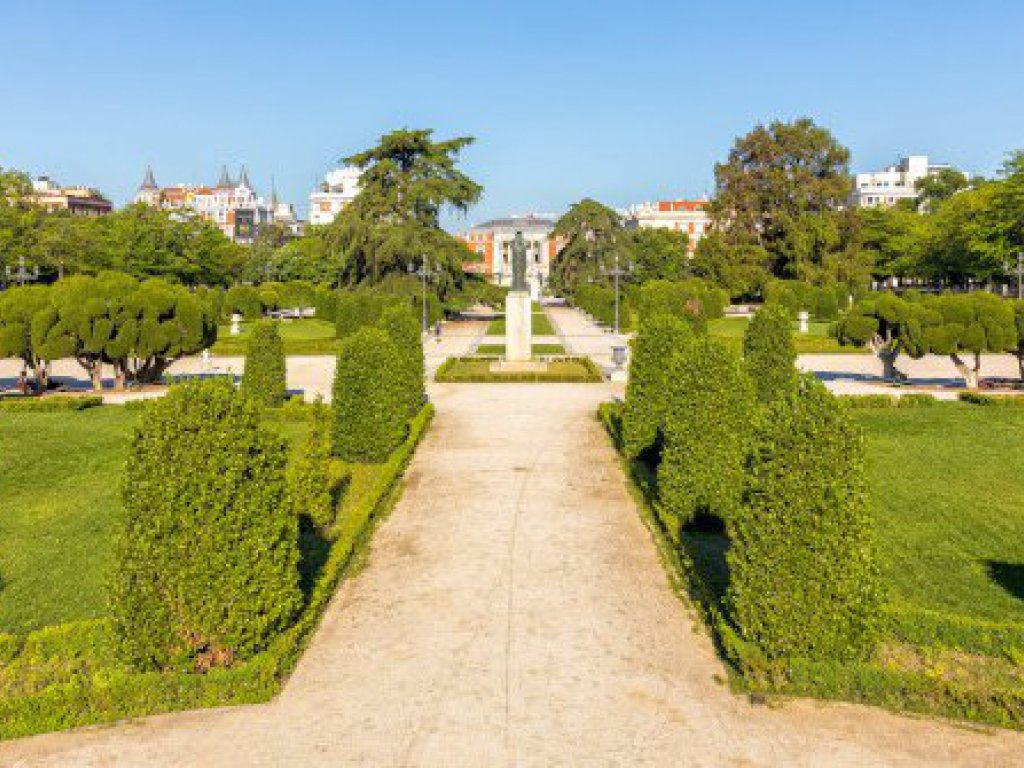
Around the Parterre
El Retiro Environmental Education Centre has published a botanical route through the park which is divided into seven sections. You can start in the oldest area, which would have been visible from the windows of the royal palace that’s now long gone. It runs parallel to Calle de Alfonso XII. Enter through the Baroque Puerta de Felipe IV gate and you’ll find yourself in the Parterre, a French-style garden. Eight paths, four running lengthwise and four diagonally, criss-cross each other to form a graticule with two large fountains in its centre. In this orderly landscape, among the pruned bay trees and the boxwood, a 25-metre-tall Montezuma cypress dating back to 1633, which until this year was the oldest tree in the park, takes the observer by surprise. According to legend, during the Peninsular War Napoleon’s troops placed their cannons on its branches to defend the stronghold they had built a little further ahead, next to Ángel Caído (Fallen Angel) Fountain. In this same area, there are some eye-catching topiary cypresses whose tops have been pruned for years to look like clouds.
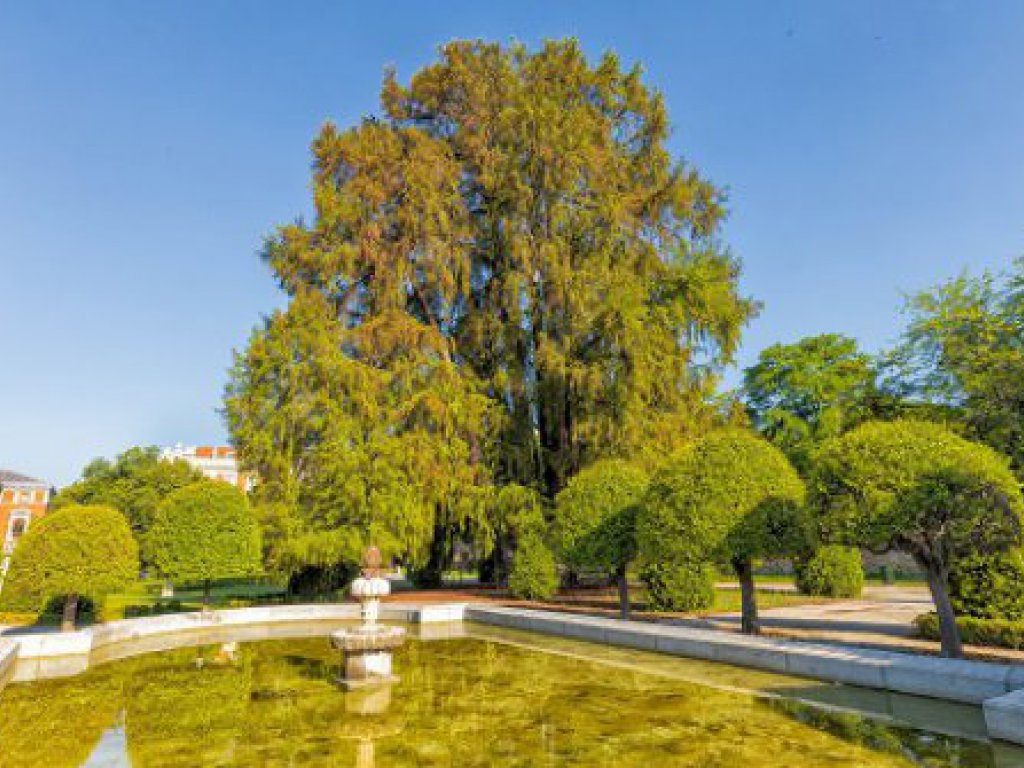
Keep walking anticlockwise and you can go up the stairs or the ramp to enter Los Planteles Garden. It’s the shadiest one in the park and is full of yew, acacia, mock orange and oak trees, but most numerous of all are the horse chestnuts that line the paths. Their leaves turn yellow in the autumn. In the wetter areas, there are lilies and California lilacs. Not far from here is the Forest of Remembrance, a small artificial hill built in 2004. Crowned by cypress trees, it pays tribute to the victims of the Madrid bombings of 11 March that same year.
A walk through the Rose Garden
The park’s southeast corner is one of the highest areas in El Retiro. In true English-garden style, pinyon pines, Atlas cedars and eucalyptus trees rise up on the horizon against a backdrop of expansive meadows. From here, you can head down to the Vivero (Plant Nursery), where you’ll find the Environmental Education Centre and the Huerta del Francés (Frenchman’s Orchard), which has over 300 almond trees. Taking Paseo del Duque de Fernán Núñez, go past the Royal Porcelain Factory ruins and later the Fallen Angel Statue to reach La Rosaleda rose garden. It was designed by gardener Cecilio Rodríguez in 1915 to imitate the one in Bois de Boulogne in Paris. It has roughly 4,000 rose bushes, although the greenhouse gifted to the city by the Marquis of Salamanca is unfortunately no longer there. Right beside it, there’s a massive Aleppo pine that’s over 200 years old. Very close by is Vivaces Garden, a gentle slope that’s home to species not commonly seen in Madrid such as the giant sequoia and the podocarpus. In May, we enjoyed dozens of acanthuses in full bloom. Fun fact! This plant was the inspiration for the Corinthian capital that’s set amidst the holm oaks.
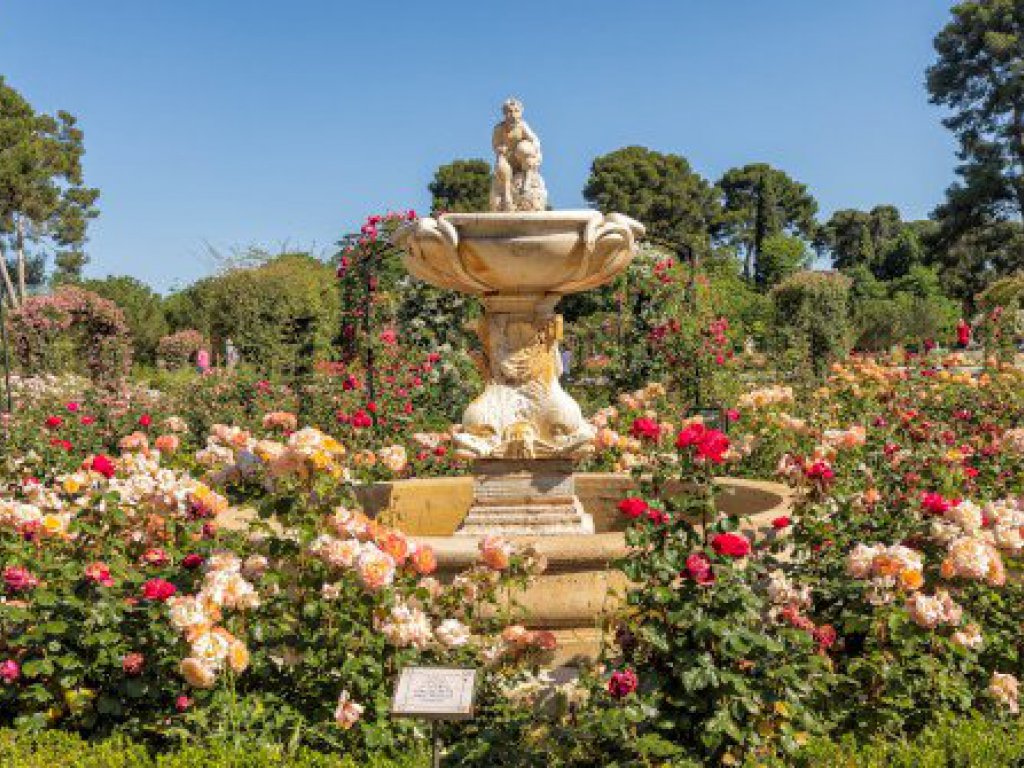
In the centre of the park, where the Glass Palace and Velázquez Palace are located, is the area known as Campo Grande (Big Field). In the 19th century the site was a fairground, and these two structures, now used as exhibition halls by the Reina Sofía Museum, are remnants from that era. Along the path heading north from La Rosaleda, you’ll find the monument to Ricardo Codorníu. Known as “The Tree Apostle”, he was a driving force in the reforestation of the Iberian Peninsula. On the left, you’ll see an Oriental-inspired garden which is designed around a stream.
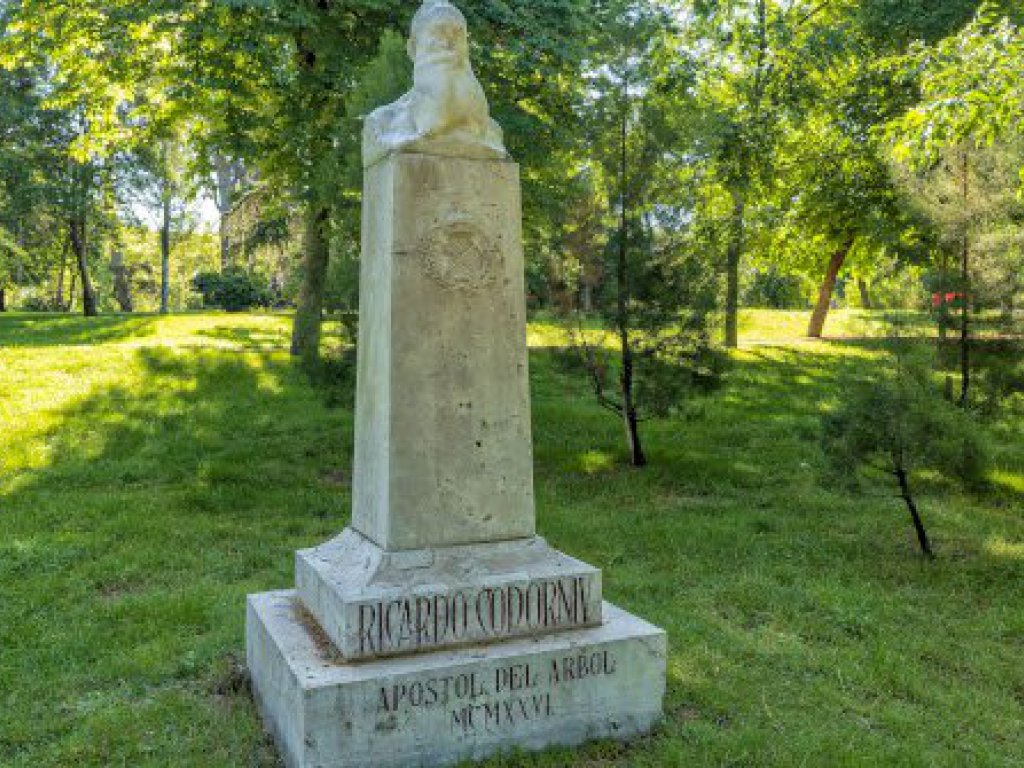
It’s home to a rosewood tree and several groups of European fan palms. A bit less conspicuous are the bald cypresses growing out of the water of the lake in front of the Glass Palace, built as a greenhouse for the plants taken to the Philippine Exposition of 1887.
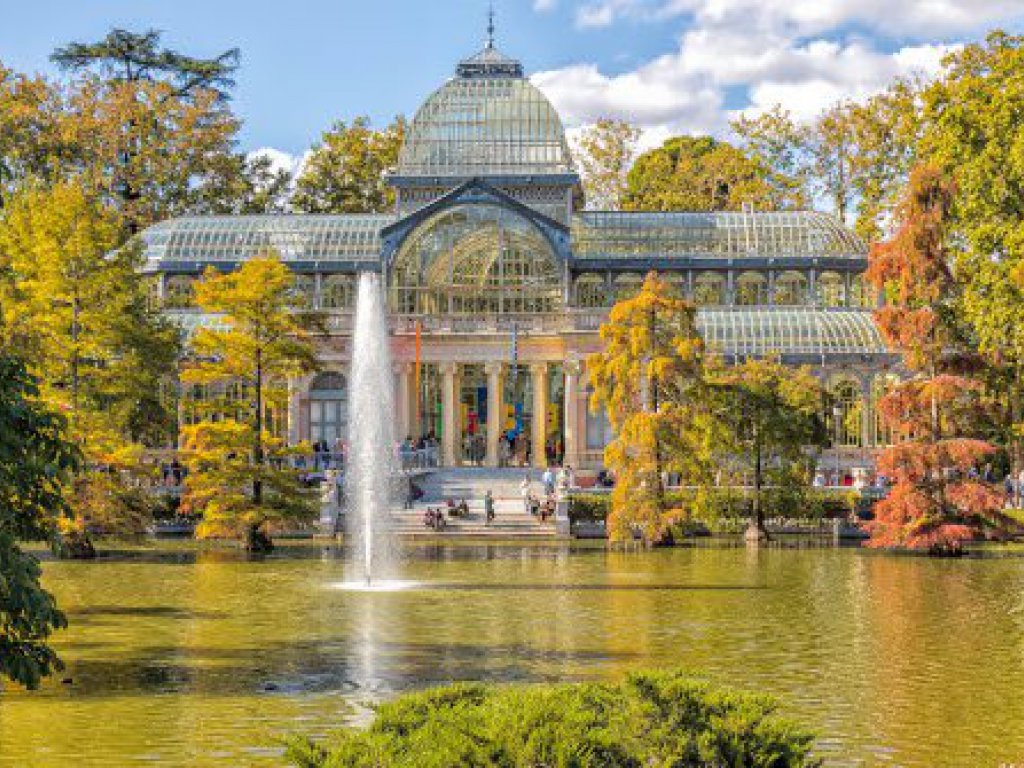
A garden dotted with pergolas
On the other side of Paseo de Coches you’ll find Cecilio Rodríguez Gardens, which have pergolas, walkways, fountains, benches and hedges perfectly arranged in pure Italian style. This peaceful eastern side of the park, a favourite place for peacocks to make their home, holds a silver maple that you’ll recognise by its large, open, star-shaped leaves. On the path leading to Casa de Fieras, which was Madrid’s first zoo and is now the Eugenio Trías Municipal Public Library, you’ll find a weeping willow and a ginkgo biloba.

The last two sections of the path go around Paseo de Coches to El Reservado (The Reserve), and from there, through the north side of the park to the Puerta de Alcalá gate. On the corner of Paseo de Venezuela, there’s an elm tree with the spiky leaves that are characteristic of the species. Before Dutch elm disease spread through the park, elms were the most common tree in El Retiro. Now, London plane trees abound in their place. There are over one thousand in total, and some are truly monumental, like the one that grows near the monument to Martínez Campos.
In El Reservado, the northeast part of El Retiro which Ferdinand VII decided to keep closed to the public after returning to Spain, there is a curious variety of tree species. As if they were trying to compete with the whimsical touches that decorated this Romantic garden—Casita del Pescador (Fisherman’s Cottage) and Montaña de Gatos (Cat Mountain)—, here you’ll find a Hardee pepper tree of South American origin, a Japanese pittosporum with white, five-petalled flowers, and a tree of heaven brought to Europe from China in the late 18th century. And there’s more: the magnolia and pomegranate trees bloom in the spring. They’re dotted around the park, and you’re still in time to enjoy them!
